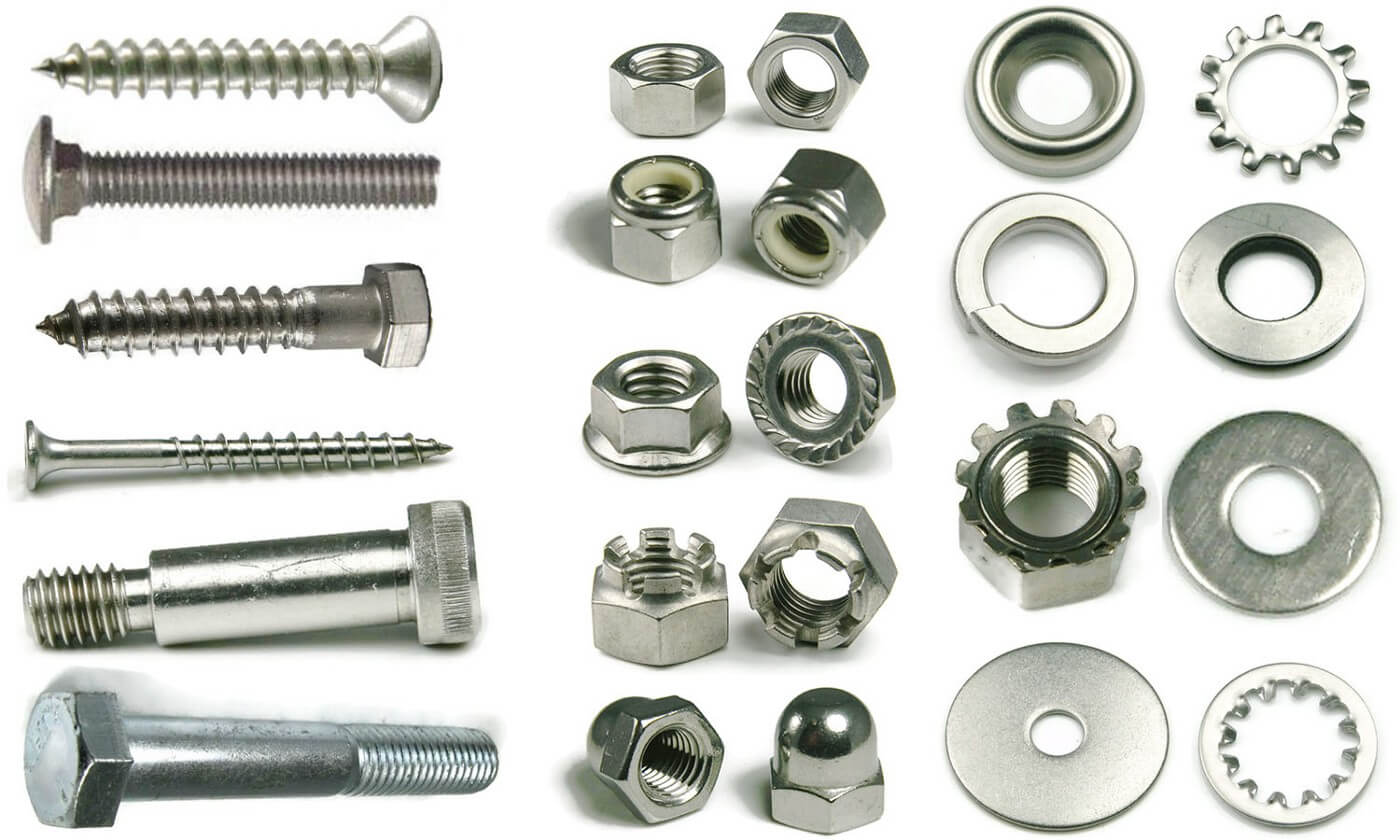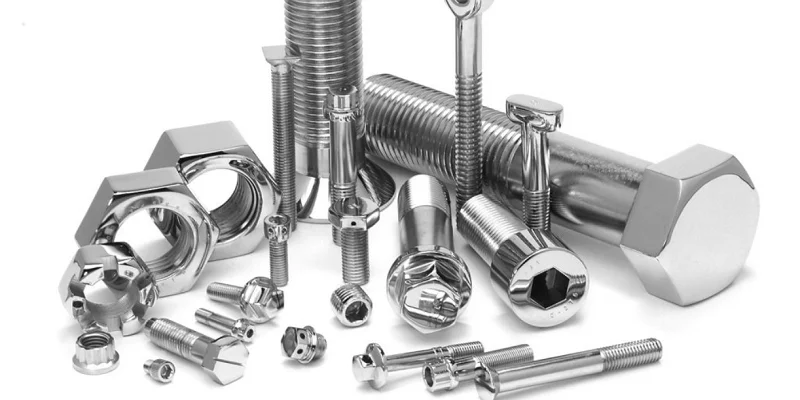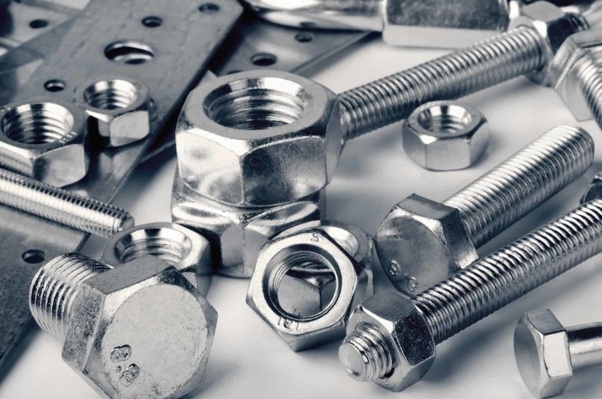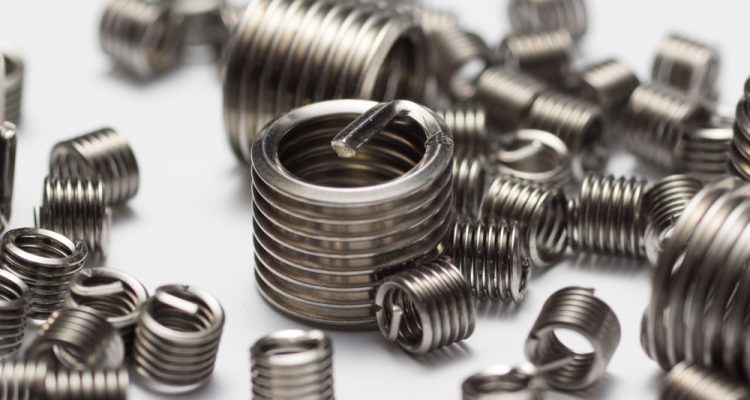
5 Steps To Make Bolts From Start To Finish
Select materials, design bolts and tooling, use forming techniques like forging or machining, apply heat treatment, and perform rigorous quality control tests
Material Selection
Material selection is the most crucial step in the manufacturing process of bolts, as it directly affects the mechanical properties, cost, and suitable environments for a bolt.
Understanding Material Properties
The choice of the material is guided by the mechanical and environmental requirements to the bolt. Thus, for machining purposes and standard applications, low carbon steel, with up to 0.3% of carbon, is frequently used due to its high ductility and excellent machinability. However, in areas with high mechanical stress, such as railway or construction, high carbon steel, between 0.8% and 2.0% carbon content, is used due to its hardness and wear resistance.
Specialty Materials
In areas with specific corrosion conditions, the primary consideration of the material is based on its corrosion resistance. In the case of saltwater corrosion, which is a common issue in marine industries, stainless steel will be used, due to its high chromium content. Additionally, molybdenum and nickel are added to make stainless steel particularly resistant to corrosion in the case of Grade 316, due to the passive layer its formation, which makes the material less likely to react with the environment. Nevertheless, while materials like titanium or some stainless steel alloys provide better properties, they are used infrequently due to higher costs or lower availability.
Considering Cost and Availability
Higher processing costs or market prices can make a particular material much less efficient than another with slightly lower tensile strength. For example, aluminium is quite suitable for bolts, as it is lightweight and can be highly resistant to oxidation. Meanwhile, available low carbon steel is always significantly cheaper than titanium or a yet discovered high-temperature superconductor.
Material Testing
Practically, each of the possible materials undergoes test panels, which measure tensile strength, yield strength, elongation, and hardness, among other things. For example, a standard 8.8 bolt is assumed to have not less than 800 MPa of tensile strength and 640 MPa of yield strength. These tests ensure that the material can handle the required tensile and shear strength without slipping or obtaining permanent deformations.

Different types of fasteners used in manufacturing Screws, bolts
Design and Tooling
Design and Tooling are the initial stages of bolt manufacturing at which precision engineering mixes with industrial craftsmanship to create the foundation of a robust and reliable bolt.
Detailed Design Specifications
A detailed engineering drawing detailing each feature of the bolt determines its exact length, diameter, head shape, and end. The drawing is created usually in CAD, with each dimension strictly following the corresponding standard or specific custom requirements. For example, an M12 hex bolt has a diameter of 12 mm with a thread pitch of 1.75mm and is designed to hold the corresponding load. The ARC thread has a greater pitch, making the threads less susceptible to shearing while allowing them to slide in the gap.
Tooling Development
Once Design is completed, Tooling is developed, which includes dies to forge the plate and to cut and shape the bolt.The central part with the cut will be processed in a calibration mold to create thread. A set of dies for each phase of the bolt production is made of high-quality steel that can withstand more significant wear and tear on the company’s machinery. The primary reason for using high-quality tool steel is that it does not stick or wear out of the resulting bolt, which may cause the machine to create a defective bolt. The life of each die is estimated 100,000 bolts and is created to within a tolerance of 0.005mm.
CAD and CAM Integration
The design data is exported to one of the tooling machines with an integrated responsive CNC system that operates through CAM according to the project. The system is programmed to calibrate bolt cuts, dies cuts, and bolts using design integration. Then the bolts are forged, machined, and threaded on the dies and calibrated in the molds.
Prototype Testing
Before the production of bolts, a prototype bolt is created and tested, verifying its functionality, conical and dimensional characteristics. One form of testing is the stress test on each type of equipment where a road car passes using one given bolt. Dynamic load tests on in-suspension parallel links are examples of the use of the bolt.
Forming Process
The forming process is the heart of the manufacturing process in which the raw material is converted into indentation bolt shape. In the forming process, the combined application of higher pressure and precise machinery in conjunction molds metal material derivative to specific indentation bolting shapes.
Cold Forming
One of the most prevalent methods in bolt manufacturing is cold forming. In the cold forming method, the induction of the metal billet into the dies is carried out at the standard room temperature. Cold forming comprises the not only energy-efficient process but also forces the metal into higher levels after work hardening is induced. Cold forming is exclusively for standard bolting while high-speed machinery continuously ejects the bolts. For instance, the production machine ejects thousands of bolts per hour through each station in a section, like forming the M8 bolt in multi-station cold forming machines forcing to carry heaving, taking, and turning continuously.
Hot Forging
Notably, for larger or more durable bolts, hot forging is used. In hot forging, the metal billet is forced into higher temperatures composed of malleable mold material than cold forging. The hot forging process crucial in manufacturing high standard bolting for construction and heavy machines, aiding in shaping complex shapes without cracking. Hot forging forms the tensile construction bolt to more than 1000 MPa, which becomes challenging through cold forming when the metal does not flow adequately on the head and threads molds.
Maching
After forming, several bolting requires the application of the second manufacturing process in which the maching process such as turning, milling, or drilling is induced. Through the involvement of precise machin process, the features of the bolt, such as the placement of head and heavy, is force-fed in proceeding second manufacturing process through machining. The production of Specific fastening requires the machining process after forming ranges from inserting an abnormal number of eyes into the eye or aerospace. For instance, the machina sample. The process of turning, including the production of the induction of the M24 bolt.. A cnc machine shop turned the process of machining general bolting. Both of the features of the standard bolt require placement of form across the bolt in the thread section forced into the turning process.
Thread Rolling
Commonly, after forming, bolting undergoes thread production through thread rolling. The thread production process includes forcing bolt into thread machine dies accompanied by bolt press pressing shank areas. However, there is an absence of the removal of material but only displacement on two dies while the bolt is pressed down between the dies having the thread dies. The M12 bolt thread maching rolls the bolt forming uniform threads and accurate thread pitch is a requirement into the production capability for bolting.
Quality Control
Quality control is critical through the formation process. Quality testing performed included Bolt Sampling to measure batch percentage securing through dimension, thread qualities, and mechanical guarding. For instance, Bolt, batch tested through random sampling criteria, include bolt tensile and search strength induced through bolt batches testing.
Heat Treatment and Surface Treatment
-
Heat Treatment and Surface Treatment are crucial steps in the bolt manufacturing process.
-
Both these treatments increase the mechanical properties and the corrosion resistance of the bolts
Heat Treatment
The purpose of heat treatment processes is to increase the hardness, and strength, and toughness of the bolts. The most common heat treatments are quenching and tempering. The bolts are heated to a specific temperature—usually 850-900°C for steel bolts—then rapidly cooled, in water or in oil. Rapid cooling forms a hard martensitic structure. Reheating to a lower temperature—between 200 and 650°C—and holding the bolts for a given time helps reduce the brittleness and increase toughness. Grade 8.8 bolts—medium carbon steel bolts—are commonly treated this way. They are expected to have a tensile strength of ~800 MPa and a yield strength of 640 MPa, all of which are important for their performance as covering bolts in machinery, and as structural and automotive applications.
Surface Treatment
Surface treatments are carried out to increase the corrosion resistance of the bolt, and to increase the appearance. Galvanization is a common surface treatment for bolts, where a thin layer of Zinc is on the bolts, which acts as a sacrificial anode. Since Zinc has a higher tendency to corrode than steel, it corrodes first and then the steel. This can extend the life of the bolt by a few times, and is technically called hot-dip galvanizing, where bolts are dipped in molten Zinc at about 450°C, which provides a thicker and a more durable coating.
Black oxide is a conversion coating for ferrous materials, primarily for appearance and mild corrosion resistance. Others use this for the looks of the bolt when it is exposed in machinery. Phosphate is used to form a base for further coatings or painting, and to reduce the friction in the threaded parts during assembly. It is added during the work up of the bolts through a chemical reaction, which leaves a crystalline conversion coating on the surface of the bolt. It is very common in automotive applications, where it reduces the friction and wear conditions of the engines, and adds lubrication.
Quality assurance in the treatment processes.
Each treated batch of bolts is tested to ensure that the heat treatment is done perfectly, that is, the required hardness is obtained, and the surface coatings too are successful. Hardness testing is done for the former, and salt spray tests are done for the latter, and the thickness of the coatings is also assured through measurements.

Types of Fasteners and Their Application – WayKen
Quality Control and Testing
Quality Control and Testing are the essential final stages in the bolt manufacturing process. They ensure that every manufactured bolt meets the specification requirements and performs as expected.
Dimensional Control
Engineers measure the bolts using various instruments. The most common is a caliper. They also use micrometers and CMM machines with touch probes. The main dimensions of the bolts being checked include diameter, length, thread pitch, and head size. For example, M12 bolt should have exactly 12 mm of the shaft diameter. The tolerance is usually ±0.05 mm. The bolts that are beyond the tolerance are not applicable and should be rejected.
Mechanical Property Testing
Tensile test measures the maximum force to divide the bolt into two pieces. For the 8.8 Grade Bolt, the tensile strength should be at least 800 MPa. Shear test measures shear strength by applying shearing force. Also, fatigue tests are applied to measure fatigue strength.
Corrosion Resistance Evaluation
The corrosive test is designed to determine how long the bolt can last under different conditions, especially for bolts designed to work outdoors. Two main types of corrosive tests are under salt spray testing, “fog”. The bolt may stay under the salt spray for 48, 96, or 200 hours. For example, a zinc layer should hold the pressure of salt spray for 96 hours without corrosion.
Metallurgical Tests
The most advanced analytical instruments are used in this test. The main purpose is to check the structure of the bolts under the microscope like SEM and EDX. It helps to see if the heat treatment occurred and figure out the percent composition. The overall goal is to check if the structure is the same inside the bolt. Some areas can be harder or softer and vice versa, which is not good. Uniformity is one of the key factors for achieving sought mechanical qualities. A certificate of conformity is produced along with a detailed test report. It is more important for aviation and automotive sectors to guarantee safety and traceable quality.



